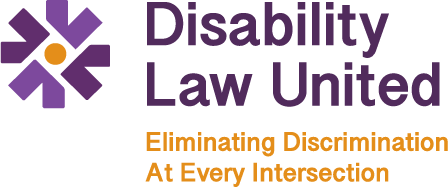Disability Law United recognizes the untapped potential of the Americans with Disabilities Act (ADA) as a tool for equality and justice in intersectional civil rights work. With the anniversary of the ADA’s passage coming up in July, we wanted to share just how powerful this piece of legislation is, and how together we can maximize its strength to fight for dignity and justice for all.
The road to the ADA began decades before it was passed and owes its success to the thousands of people who protested, lobbied, and advocated for the injustices faced by disabled people to cease. Additionally, its passage is owed to the civil rights movements tactics of the 1950s and 1960s, which were utilized by disabled people and disability advocates.
One such tactic was the use of sit-ins. Section 504 of the Rehabilitation Act of 1973 was meant to guarantee rights and protections to disabled people. But it wasn’t until 1977 when the Section 504 regulations were signed and enforced as a result of the longest sit-in to date in a federal building.
In 1986, the National Council on Disability released a report named “Toward Independence: An Assessment of Federal Laws and Programs Affecting Persons with Disabilities – With Legislative Recommendations,” which advocated for laws that would greater protect and empower disabled people. This report lead to proposed legislation that was brought before a public hearing in 1988, which gave way to additional legislation and became a blueprint for the ADA as we know it today.
When it passed in 1990, the ADA was a groundbreaking piece of legislation. It envisioned a world where disabled people live as full community members, and participate in civic life at every level. It contended that the burden of changing systems and accommodating disabled needs was upon society, and NOT the individual.
Business owners, government entities, and those who owned or tended public spaces needed to ensure disabled access. This was an important achievement for disabled people, as access had long been restricted to the wealthy who could pay for their own accommodations. More than that, the ADA made a statement that disabled citizens were entitled to the same rights and benefits as non-disabled citizens – that disabled peoples’ lives were not less meaningful and deserving of less from their government.
But while the ADA was great on paper, governments, organizations, and allies needed to ensure its enforcement, and often disabled people have had to take time and energy each and every time they wish to gain access to systems that should already be set up to serve their needs — but aren’t.
The legacy of these activists and advocates has been realizing the vision of the ADA since 1990, and Disability Law United is proud to help enforce the ADA’s vision of a just and inclusive society – one legal battle at a time. Join us by contributing to our movement here.
